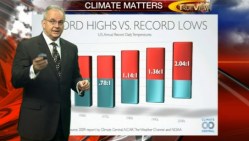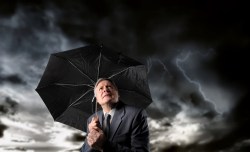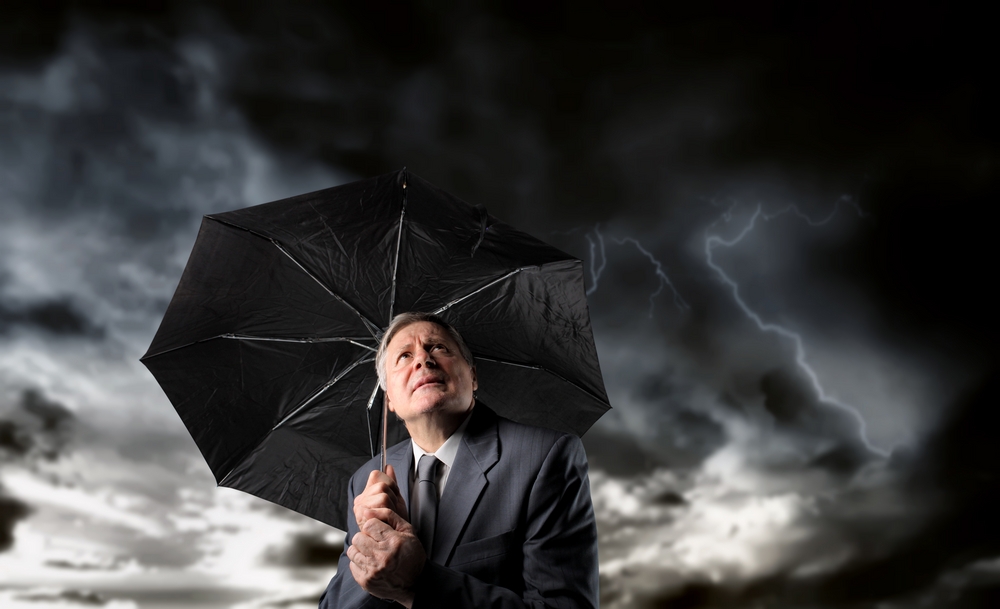
Jim Gandy connects climate and weather for WLTX.
Weathercaster Jim Gandy, one of the nation’s most effective climate change communicators, broadcasts in South Carolina, one of the most conservative states in the nation, providing a powerful example for weathercasters across the country.
Forecast the Facts staff caught up with Gandy at the American Meteorological Society’s 40th annual Broadcast Meteorology Conference, in Boston, Mass. With a black cowboy hat and light southern drawl, Gandy told us he started investigating climate science in 2005 after geology professors at a nearby university asked him, “What do you think about this climate change thing?” Gandy took the question seriously, familiarizing himself with the peer-reviewed literature, and learning about how human activities are changing the weather and climate.
In 2011, Gandy partnered with George Mason’s Center for Climate Change Communication and the nonprofit Climate Central to develop a program called Climate Matters, a segment that places his weathercasts in the context of climate change. Gandy also blogs regularly about climate. Broadcasting in South Carolina, Gandy was well aware of the risks. “I’m not from a red state, I’m from a dark red state,” he told us. Like his friend and peer Dan Satterfield, a weathercaster based until recently in Huntsville, Ala., Gandy began speaking out about climate change fully prepared to face backlash from his politically conservative audience.
But a funny thing happened: The backlash never came. Rather than facing an onslaught of angry phone calls, Gandy found that many viewers were fascinated by his reports connecting climate change with their daily lives. His report on climate change’s impact on poison ivy, for instance, received praise from viewers who stopped him on the street to thank him.

Never fear! Better climate coverage is here! (Photo by Shutterstock.)
Unfortunately, Gandy is an outlier among weathercasters, who are some of the America’s most trusted public messengers on climate change [PDF]. Even among weathercasters who are convinced about the science of climate change, 39 percent report [PDF] that a perceived “lack of viewer support” prevents them from including climate information in their nightly broadcasts. But if numerous public surveys [PDF] and the urging of thousands of Forecast the Facts members aren’t enough to persuade the more cautious in the profession, Gandy’s experience should be.
Later in the day, we learned from Ed Maibach, director of the Center for Climate Change Communication (4C), that the positive impact of Gandy’s reports is not just anecdotal. Maibach’s team surveyed the Columbia, S.C., media market before and after Gandy launched “Climate Matters,” asking questions about climate change to viewers of Gandy’s station, and comparing them with responses from viewers who tuned in to other stations. 4C’s hypotheses heading in to the experiment were borne out. Viewers of Gandy’s station learned more about climate change than viewers of other local newscasts. Furthermore, the more viewers watched Gandy’s program, the more informed they were about climate change and the science behind it. So, to review: More effective climate communication leads to greater public understanding, with some personal gratitude heaped on top. In Columbia, S.C.
Maibach told the audience of over 200 of the nation’s top weathercasters that they are second only to scientists in the public’s eye as trusted messengers on climate change. Unlike scientists, however, TV meteorologists are professional communicators with incredible access to the public. “You are the Bruce Springsteen of television,” Maibach said. “You are the reason many people turn on the television each day. You are the only ones who can fill the stadium.”
As we spoke to TV meteorologists throughout the day, we continued to hear from many that climate change feels untouchable, that the public won’t be receptive, that it’s too “political” or “controversial” to talk about. But the experiences of Gandy, Satterfield, and other brave “climatecasters” proves otherwise. Presenting established science to viewers and broadening the context of weather reporting isn’t just doable — it’s welcome, and sorely needed.



